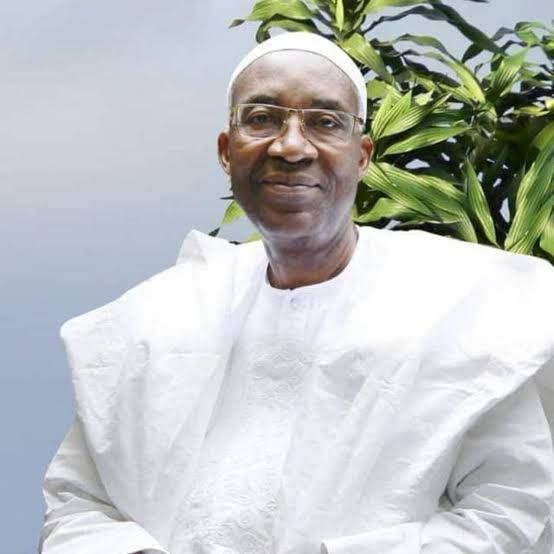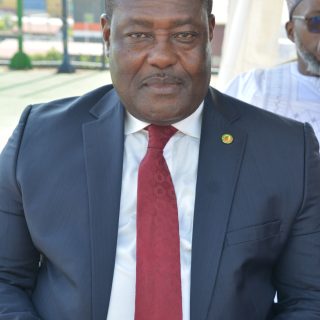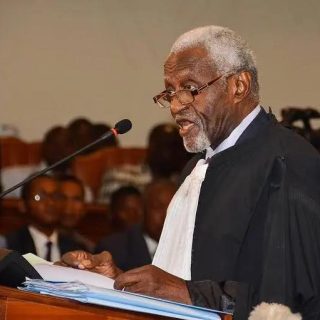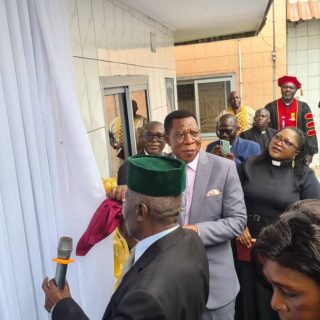Revisiting The Rebirth Of Multiparty Politics In Cameroon / Political Parties Of The Early 90s (1990 – 1992)

The official rebirth of multiparty politics in Cameroon was in 1991. In this article, we will be looking at political parties that were created, or that were in existence, before the first multiparty presidential election in October 1992.
The Founding Fathers that worked on the project to create a political party which they baptized as the Social Democratic Front, started work in 1989 and ended in early 1990 with the creation of the party. In line with the then existing Law, an SDF delegation led by the party’s Pioneer National Chairman of the party, Ni John Fru Ndi, deposited the party’s Declaration at the office of the Mezam SDO in Bamenda on March 16, 1990. The then existing Law which dated back to the 60s, with a little touch in 1983, did not prohibit the existence of more than one political party in the country, though the situation on the ground was that of one party mentality.
Meanwhile, after the SDF Declaration was deposited at the office of the SDO of Mezam in Bamenda on March 16, 1990, the administration and Government stayed silent. However still in conformity with the existing Law, the SDF leadership after two months (60 days), assumed that the administration had no problem with its file, and that the party had thus been legalized. Fru Ndi signed an announcement on 15 , 1990 to announce that the party would be launch in Bamenda on May 26, 1990. Suffice to say that the SDF was launched on that May 26, 1990, despite the numerous obstacles that were mounted by the Biya regime to block the event from holding. The Biya regime throughout that 1990 considered the SDF an illegal organization, even though the party was created and launched in line with the existing Law.
Liberty Laws Adopted In 1990
Meanwhile the Biya Government in that 1990 sent a series of Draft Laws to the then one – party (CPDM) parliament which adopted them. The Government termed them, Liberty Laws. The Liberty Laws adopted by parliament in 1990 were signed and promulgated in Law by President Biya on January 1, 1991. One of these Laws was on the creation and legalization of political parties in the country. All existing political parties were obliged to register afresh. Thus the ruling CPDM that came out of the CNU Congress in 1985 in Bamenda, with the transformation of the CNU into the CPDM, had to be officially re –registered in 1991. So too was SDF forced to re-submit its file for registration in 1991, even though very reluctantly. So SDF though created in 1990, was legalized in 1991.
One of the major opposition parties in Cameroon that was born or legalized in that 1991, was the UNDP Party, which had a southerner, Samuel Eboua as National President. Issa Tchiroma Bakary was the Secretary General of UNDP, while Hamadou Mustapha then was 1st Vice President of UNDP, (National Union for Democracy and Progress). There was also Dr Adamou Ndam Njoya’s Cameroon Democratic Union. Created in 1991 with the Prince of Foumban, Adamou Ndam Njoya as Founding President, the Vice President of CDU from its creation in 1991 to when Ndam Njoya passed away in 2020, was Cyrille Georges Sam Mbaka. Worthy of note that if there is one opposition party in Cameroon that can honestly swear that it has from creation till date has never had anything to do with the ruling CPDM or government, whether in the open or behind the scene, it is Ndam Njoya’s CDU.
More Political Parties
Meanwhile there was also the MP (‘Mouvement Progresssistes’, of Jean Jacque Ekindi aka Lion Hunter. Ekindi was once the powerful CPDM Section President of Wouri (Douala). That was before Wouri was divided into six sections. Ekindi resigned from the CPDM in 1991, and joined the opposition in grand style. In fact he was welcomed as a hero, due especially to his powerful resignation letter from the CPDM. He went on to create the ‘Mouvement Progresssites’, MP party in that 1991.. In Edea was Yondo Marcel, the former Minister of Finance. He created a political party, MLDC. In the nation’s capital, Yaounde, was Dr Victorin Hameni Bieleu, and his UFDC. Another opposition party that emerged was the LDP of Ambassador Fossung, which projected itself as the party of intellectuals.
UNDP – Ahidjo’s Men
Besides UNDP in the Grand North, a small opposition party, MDR, was created by Dakole Daissala , one of former President Ahmadou Ahidjo’s men. Dakole Daissala was one of the Northern elites that was imprisoned after the April 6, 1984 attempted coup d’etat in Cameroon, and spent seven years in jail. As regard MDR, its strength was limited to Dakole Daissala’s Division of origin in the Far North Province.
The party that prides itself as the oldest political party in Cameroon, ‘Union des Populations du Cameroun’, UPC, or better still, the Union of the Populations of Cameroon, that was created in the 1950s and had been forced to go underground for decades, was revived. UPC however had to be re-registered as a new political party in Cameroon, as insisted upon by the Biya regime. In the registration document of the UPC in 1991, Prince Dika Akwa was President, while Augustin Frederick Kodock was Secretary General. Worth noting that in the UPC, the real boss of the party is the Secretary General, while the post of President is more of a ceremonial post.
Another serious opposition party that emerged was Samuel Eboua’s MDP. But perhaps we should instead talk of a serious opposition personality in the person of Samuel Eboua, and not the MDP as a political party, because it never succeeded to win even a local election at its base, Nkongsamba. It should be noted that Samuel Eboua who was initially the National President of UNDP in 1991, created the MDP as the real owners of UNDP (northerners) took away the post of National President from him in January 1992. Former Prime Minister, Bello Bouba Maigari, who in 1991 returned to Cameroon from self- exile in Nigeria, became the National President of UNDP in January 1992.
El Hadj Lawan Bako Launches UDP In Bamenda
In 1992, Bochong El Hadj Lawan Bako, created and launched his United Democratic Party, UDP, at the Bamenda Municipal Stadium. It should be noted that Lawan Bako was one of the political heavyweights in Bamenda in the late 1980s, though quite young then. He was one of the political elites that Albert Womah Mukong secretly invited in 1989, to come onboard a secret platform that had to work to create a new political party (SDF). He turned down the invitation but made a financial contribution, .El Hadj Lawan Bako also deserve praise, for the fact that though he did not join the group of Founding Fathers to create the SDF, he kept the information secret. If he wanted to sabotage the creation of the SDF, he would have done it, and that happened to Yondo Mandengue Black and his group in Douala that were dumped in jail for secretly working to create a political party, would have happened to the Founding Fathers of the SDF.
Gistave Essaka And His DIC
It should be noted that a number of political parties emerged claiming to be of the opposition, but were in reality satellite parties of the CPDM. That was the case of Gustave Essaka’s DIC in Douala. DIC was the first political party that the Biya Government officially legalized in 1991. But it soon became clear that the mission of Gustave Essaka and his DIC which was more of a one man – party, was to constantly attack the SDF and especially its National Chairman, Ni John Fru Ndi. There were a number of other CPDM satellite parties passing around for opposition parties. In Bamenda emerged another party of which Ahadji Tita Fomukong, who was initially of the SDF, was one of the leaders. One of the dark spots of politics in the early 90s in Cameroon was that Ahadji Tita Fomukong was assassinated in Bamenda in October 1992 by a gang of opposition thugs, during post –election violence. That is, the violence that erupted after the first multiparty presidential election that took place in October 1992. HORRIBLE!
SDF As The Leading Opposition Party
Meanwhile, the claim that the SDF was the biggest opposition party in Cameroon before the October 1992 presidential election in October 1992 seemed true. But it was in realty based more on assumption, because before the 1992 presidential election, the SDF had not yet participated in any elections in the country, having boycotted the first municipal and legislative elections that took place in March 1992. However the assumption that SDF was a big political force was based on the mammoth and excited crowds that used to attend rallies of the party, especially those presided over by the National Chairman, Ni John Fru Ndi. To say that tens of thousands of people used to attend Fru Ndi or SDF rallies in big towns like Douala, Bafoussam, Bamenda and even Yaounde in the early 90s, was no exaggeration. The results of SDF‘s first participation in the municipal elections in 1996 and the legislative elections in 1997, confirmed that it was in fact the biggest, or better still the leading opposition party in Cameroon.




